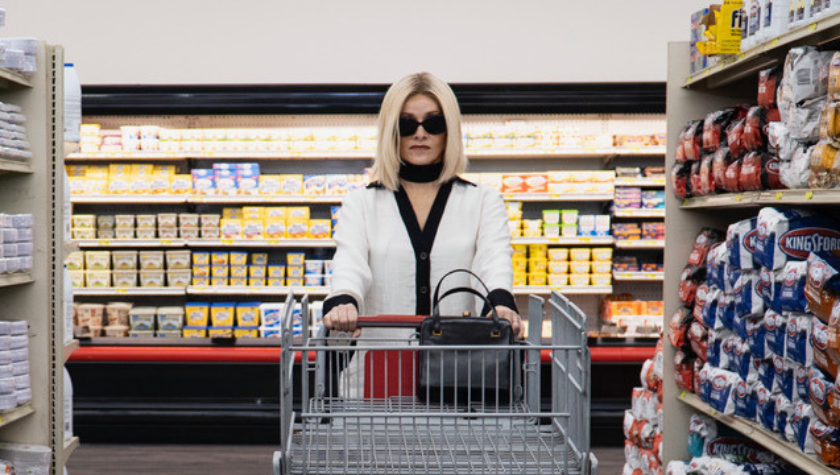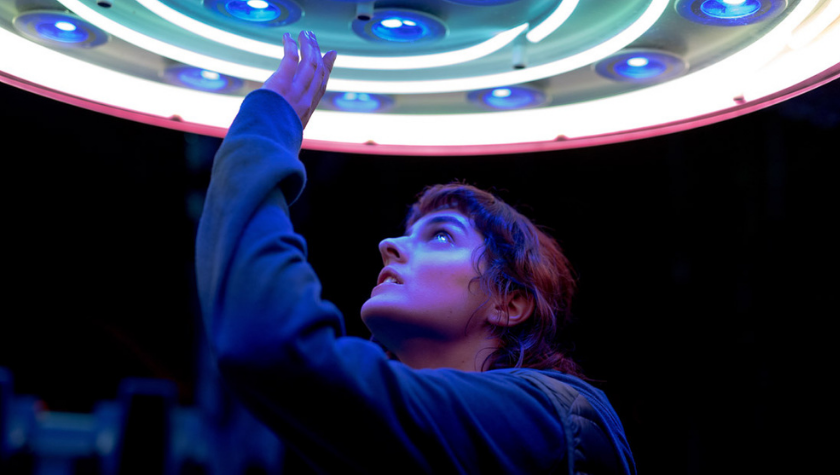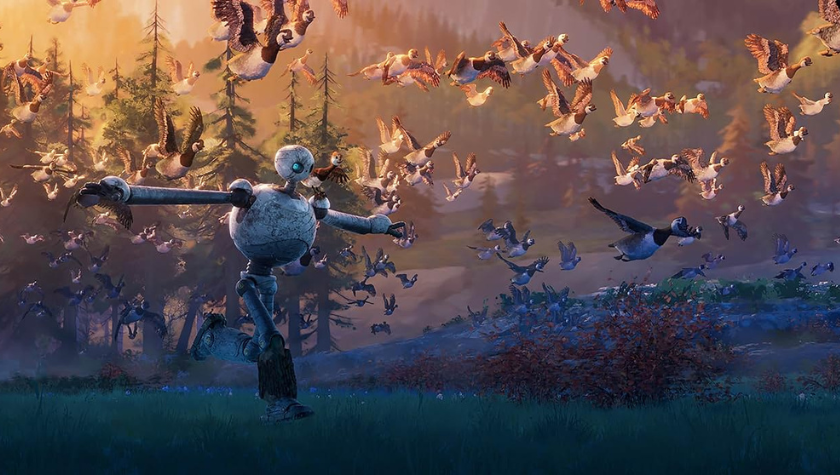Wild Wild Country: An Interview with the Series' Creators
April 11, 2018
"How did I never know about this?"- It's the first thing most people say when learning about the largest bioterror attack in American history. The affair is now the subject of the immensely popular Netflix documentary series, Wild Wild Country, but it almost feels like a disservice to the series, and the event, to reduce this cultural phenomenon down to any single incident. The Rajneesh story spans cultures, countries and time; for the people involved in this epic, much has gone unsaid - until now...
How did two brothers from Thousand Oaks, CA manage to bring this seemingly long-forgotten chapter of American History back to light? Linking up with Mark and Jay Duplass (Baghead, Room 104) was an important move for filmmakers Maclain and Chapman Way, and the other members of their tight-knit team, including another brother, Brocker, who scores their films, and Chapman’s wife, Juliana, who is their creative producer.
“We worked on [Wild Wild Country] for about three and a half to four years,” says Maclain. “Like our first documentary, The Battered Bastards of Baseball (2014), we kind of just made it in a bedroom, but this time we teamed up with Mark and Jay Duplass. We cut it at their house in Highland Park where they run their production office and we’re incredibly thankful to them… It’s so small and then you launch it globally and you never know how it's going to do, but it’s been amazing to see it spread out there.”
Final Draft: How did you guys become interested in this story?
Maclain: We kind of stumbled into documentaries - I was a History major in college and Chap went to film school, and we found this niche of archival documentary filmmaking. After Battered Bastards had come out, we were getting pitched a lot of ideas for documentaries, which was very new and interesting to us, but they were always sports stories. We wanted to step outside of that box and do something interesting…
We had licensed footage from a film repository in Portland, Oregon where the film archivist told us that he had 525 raw U-matic tapes on the craziest, most bizarre story that ever happened in Oregon.
He told us about this Indian Guru and his followers that bought a 64,000-acre ranch in Eastern Oregon, spent $110 million transforming this wasteland into a utopia, took over this local town and bused in 5,000 homeless people, and 750 people get poisoned… We were almost questioning his accuracy, but we immediately knew that this story was so big and vast in the scope that it would be amazing if we could do it as a long-form documentary series.
FD: Which is generally the reception everyone has when they first watch the series…
Chapman: Absolutely - that's the reception we had and I think there are a few reasons why it slipped under the radar: most people are familiar with [The Jonestown Massacre and Waco, Texas], there's so much death in those stories it stayed in the American conscious. When we were looking at all the news footage, it was regarded as this bizarre, quirky story of a guy with a bunch of Rolls Royce's doing something weird in the desert… No one took this story seriously and I think it's taken 35-40 years to realize the stakes of this conflict were massive… It was kind of misreported at the time.
FD: So how did you acquire so many excellent primary sources?
MW: Our policy is to leave no stone unturned… the bulk of the footage did come from a unique collection in the sense that almost all of the news stations in this period - not just in Portland but America - were switching over from 16mm film to U-matic tape - a predecessor to VHS. What's really special about the footage we were working with is that, one: news directors decided not to tape over it because they saw what a historically significant story the Rajneeshpuram would be to American history, and two: a lot of archive footage from news sources is usually only what made it on to the nightly news: just edited segments. This was raw footage - we called it "archival vérité." It's very unstructured; very long and meandering and perfect for what we need.
There was also a professional media department on the ranch that would make these promotional videos showing life on the ranch… They would send those videos out to satellite communes so European and Australian Rajneeshees could see what was happening with Bhagwan and the ranch… I don't know if we'll ever be this fortunate to have this much source material on a story again.
FD: Did the Netflix model of releasing all episodes at once affect the way you structured the story?
MW: Once we started diving in, we came across this calm underbelly of religious rights; of freedom of religion; fear of the other; immigration issues and land-use laws - we knew the only way to keep it entertaining and interesting was to do it in a longer format…
The first thing we did was script out the episodes and that looked like six one-hour episodes. We then sat down and wrote treatments for each; What's the opening sequence for this episode? What's the turning point? Cliffhanger? We structured it as tightly as we could, and that helped us when we went to do our interviews because we knew if we could capture these moments the narrative structure would work. That's not to say we weren't open to new stories and new revelations that came from talking to our characters but having that kind of treatment for all the episodes helped us structure this entire thing.
CW: It's one of the main advantages of doing archival stories - a lot of documentary filmmakers are working with stories that are unfolding in real time - you have no idea how they're going to end - the advantage of doing a story that happened forty years ago is we already know what happens, so we can structure the story before we go into interviews.
FD: Above everyone else, Sheela feels like a through-line protagonist. Was it difficult to get Sheela to do an interview?
CW: As soon as we started, the first character that jumps out is Ma Anand Sheela. [She] was basically the CEO of this entire religious empire and was kind of running the show out there. We knew right away that it would be incredibly fascinating to hear from her perspective - especially if we did it in this long format. We did some research and tracked down an email address for one of the health clinics she runs in Switzerland… the next day we got her on the phone, and she was a little hesitant, but after a few minutes, I think she started to realize she has a story to tell and that maybe the story of Rajneeshpuram has been misremembered. She felt like she had never been given a platform to tell her side of the story, so we afforded her that opportunity… we ended up getting this provocative, revealing, intimate interview with her, which anchors the series.
FD: What was it like to be in her presence?
CW: We did pre-interviews with federal and state officials in Oregon; they described her as "pure evil." Someone who has zero empathy. We were a little nervous, but getting to know and spend time with her, we all got more comfortable with each other and built a sense of trust going into the interviews. I think that lent itself towards this provocative, intimate interview… it was a fascinating experience getting to hear her life and story - having her walk us through these events of what exactly happened out there in Eastern Oregon.
FD: There are obvious parallels to today's political climate, but rarely does the documentary offer a point of view that says, "this side is right, and this side is wrong." Is this omniscient point of view a direction you guys always planned on taking the doc in, or, did this manifest itself as the research and interviews proceeded?
CW: When we were initially doing the research, we felt that people have already had 40 years to reflect on this so who knows how interesting or dynamic the interviews will be, but as soon as we got to know characters on both sides we realized that this battle is almost as important to them now as it was back then. Both sides still believe they are on the right side of history and that they were the heroes in this story.
We were confident that if we could structure the interviews in the right way that would come across - watching the same event happen but seeing it filtered through two or three completely different perspectives…
A lot of people have been praising us for being so objective, but I don't think we felt any journalistic obligation to have that integrity: we consider ourselves filmmakers, and we felt that was truly the most fascinating way to tell this story - to allow the audience to do some critical thinking to figure out where they stand on the issues and the story.
The Sannyasins and citizens of Antelope obviously have their own very distinct point of views that are still harbored today. Did the varying opinions of interviewees affect the way you were structuring the narrative, or did it alter your perspective on the events?
MW: It was a process of discovery: when you meet Sannyasins, they talk about the Antelopians as these incredibly one-dimensional, bigoted, evil human-beings, and then you spend some time with them, and you realize that there is a certain element of that in that community, but it's not indicative of everyone that lives there… You get to know them and their way of life and their values. You see that these are three-dimensional human beings.
And then you talk to people in Antelope about Rajneeshees, and they'll tell you about this brainwashed, evil, sex-terrorist cult that took over their town. You spend time with Rajneeshees, and you realize that's not the case either - these are thoughtful, intelligent people who were looking at a new way of life; looking to create their community and their happiness…
We realized that both sides are viewing the other in a one-dimensional prism-box and if we could capture that in the interviews it would be fascinating for the audience to make up their minds on how they feel about these people.
At the end of the documentary, there's the sense of a final irony. What are some of the lessons the average viewer can draw from this series?
MW: Looking at the end, what we found interesting was that the whole battle of Rajneeshpuram started over this land-use battle - does this religious minority have the right to build a religious mecca on this farmland? The locals, the government, the 1000 Friends of Oregon fought them tooth and nail. We saw a little bit of irony: there wasn't nearly as much uproar when this Christian youth group bought the property to use it as a summer camp. Anyone who watches it will see the hypocrisy of how Americans use the legal system and the constitution when it benefits them to attack others.
What about as filmmakers or writers?
MW: Where we are politically and culturally in our country, people want to immediately know how they feel about an issue. They want to immediately feel like they're on the right side, and there's such a kneejerk reaction to completely dismiss any philosophy or ideology that you don't feel falls in line with your own.
What's interesting about this series is it's showing that viewers are interested in doing critical thinking; they're interested in exploring these gray areas of philosophy and ideology and religions and people don't necessarily like being spoon fed exactly how they're supposed to feel about something. For so many years - at least in the documentary genre - it's been activist filmmaking - a documentary filmmaker wanting to prove to you why they're on the right side of an issue and why you should be too.
Exciting for us is seeing the reaction from audiences; there are people out there that are hungry for something that's a little bit more challenging. If you're a writer, you shouldn't shy away from things that might cause a little bit of controversy or uproar… we're hungry for content that's a little more challenging and thoughtful.
What’s a dream project for the Way Brothers?
CW: I don't know if we have a specific one in mind, but we're always excited by stories that have this rare archival collection; when we did The Battered Bastards we got to transfer a lot of old 16mm film that had never been seen before… it just feels like you're watching something unique - the same thing with Wild Wild Country a lot of the footage had never been seen - it's a real thrill for us to reshape that old footage in a modern context in a modern setting with new music and cinematography and we're always looking for stories that have that special-kind-of-footage quality.
Written by: Andrew Schwartz
- Topics:
- Industry Interviews & Spotlights




